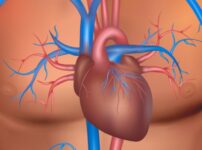Original Title: 2016 ACC/AHA Guideline Focused Update on Duration of Dual Antiplatelet Therapy in Patients with Coronary Artery Disease. Reference: Levine GN et al. Circulation. 2016 Mar 29. [Epub ahead of print]. Courtesy of Dr. Alejandro Lakowsky. The new ACC-AHAGuidelines on the optimal duration of dual antiplatelet therapy(DAPT) in patients with coronary artery disease have just been…
Immediate vs. Delayed Stenting in Primary PCI
Original Title: Comparison of Immediate With Delayed Stenting Using the Minimalist Immediate Mechanical Intervention Approach in Acute ST-Segment–Elevation Myocardial Infarction. The MIMI Study. Reference: Loic Belle et al. Circ Cardiovasc Interv. 2016 Mar;9(3). Delayed stenting after normal epicardial flow restoration is meant to lower the chance of distal embolization and to improve reperfusion in the…
Which intraprocedural thrombotic events impact PCI outcomes
Original Title: Which Intraprocedural Thrombotic Events Impact Clinical Outcomes After Percutaneous Coronary Intervention in Acute Coronary Syndromes? A Pooled Analysis of the HORIZONS-AMI and ACUITY Trials. Reference: Jeffrey D. Wessler et al. JACC Cardiovasc Interv. 2016 Feb 22;9(4):331-7. Courtesy of Dr. Agustín Vecchia. Intraprocedural thrombotic events (IPTEs) indicate short and term prognosis in PCI patients. This…
Survivors of Myocardial Infarction with Cardiogenic Shock: Long Term Outcomes.
Título original: Post-Hospital Outcomes of Patients With Acute Myocardial Infarction With Cardiogenic Shock Findings From the NCDR. Referencia: Rashmee U. Shah et al. J Am Coll Cardiol. 2016;67(7):739-747. Even though mortality after cardiogenic shock MI is quite high, many survive and are discharged. So far, there is little we know about their prognosis after discharge.…
Immediate vs. delayed intervention in non-ST-elevation myocardial infarction
Original Title: Immediate Versus Delayed Invasive Intervention for Non-ST-Segment Elevation Myocardial Infarction Patients The RIDDLE-NSTEMI Study (Randomized study of ImmeDiate versus DeLayedinvasivE intervention in patients with Non-ST-segment Elevation Myocardial Infarction). Reference: J Am CollCardiolIntv. 2016. Online before print. This study assessed the clinical impact of immediate invasive intervention (within 2 hours) vs. delayed intervention (within…
FFR in non-ST elevation myocardial infarction
Original Title: Fractional flow reserve vs. angiography in guiding management to optimize outcomes in non-St segment elevation myocardial infarction: the British Heart Foundation FAMOUS–NSTEMI randomized trial. Reference: Jamie Layland et al. European Heart Journal (2015) 36, 100–111 Courtesy of Dr. José Amadeo Guillermo Álvarez. Several studies have established the value of fractional flow reserve (FFR) in…
Primary PCI with Bioresorbable Vascular Scaffolds
Original Title: One-year Clinical and Computed Tomography Angiographic Outcomes after Bioresorbable Vascular Scaffold Implantation during Primary Percutaneous Coronary Intervention for ST-Segment-Elevation Myocardial Infarction. The Prague-19 Study. Reference: Widimsky P et al. Circ Cardiovasc Interv. 2015 Dec;8(12). Courtesy of Dr. Carlos Fava. Primary PCI is the most common course of treatment for ST elevation myocardial infarction (STEMI)…
BACC: Protocol for Rapid Diagnosis of Myocardial Infraction
The 1-hour algorithm using high-sensitivity troponin measurement for rapid diagnosis of AMI is safe. To carry out the BACC study (Biomarkers in Acute Cardiovascular Care) the effects of the troponin assay at 1 hour were compared to its effects after the 3 hours recommended by the ESC guidelines in 1.045 patients presenting with acute chest…
TOTAL Trial: The Best on Manual Thrombectomy in AMI Patients
Original title: Randomized Trial of Primary PCI with or without Routine Manual Thrombectomy. Reference: S.S. Jolly et al. for the TOTAL Investigators. N Engl J Med. 2015 Apr 9;372(15):1389-98. Manual thrombectomy is a routine procedure with ST elevation AMI patients. This common practice proved to reduce mortality in the TAPAS study. However, the TASTE study did not observe…
Impella 2.5 improves survival in AMI with cardiogenic shock
Original title: The Use of Impella 2.5 in Severe Refractory Cardiogenic Shock Complicating and Acute Myocardial Infarction. Reference: Frederic Casassus et al. J Interv Cardiol. 2015 Feb;28(1):41-50. The presence of cardiogenic shock is observed in 7% of patients undergoing acute myocardial infarction (AMI) with ST segment elevation and 2.5% of those with non-ST AMI. In this scenario inotropic…
Hemodiafiltration lowers mortality in ACS patients and cardiac and renal dysfunction
Original title: Post-procedural Hemodiafiltration in Acute Coronary Síndrome Patients UIT Associated Renal and Cardiac Dysfunction unfergoing Urgent and Emergency Coronary Angiography. Reference: Giancarlo Marenzi, et al. Catherization and Cardiovascular Interention 2015 85:345-351 The association between acute coronary syndrome (ACS) and severe renal and cardiac dysfunction lowers survival. There is little information as to the best strategy to treat…









